Uncover Chinon's vibrant flavors and culinary gems with our expert guides. Plan an unforgettable trip now!
Read more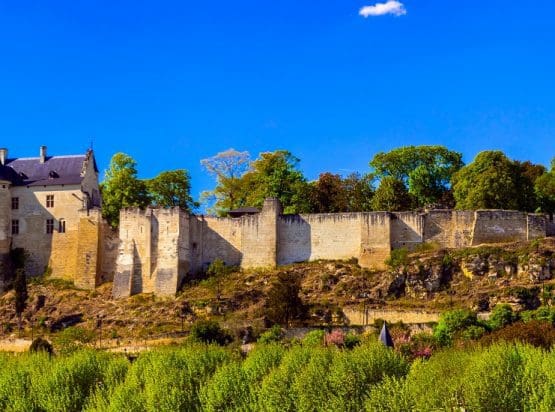
EXPLORE ALL OUR LOIRE VALLEY WINE REGIONS GUIDE
Last updated: April 4, 2025
Ideally situated along the northern banks of the Vienne River and flanked by majestic chateaux, Chinon is a tourist destination without parallel. Yet this timeless part of the Loire Valley does not solely exist for the benefit of well-heeled travelers. It is one of the region’s most important producers of seductive Cabernet Franc, grown on both sides of the river. Historically, the vast majority of Chinon rouge was an ethereal, dainty creature, light in body and supple in tannin.
But, as the climate warms and winemakers respond accordingly, Chinon runs the whole gamut from rich, powerful reds to elegant rosés – over 11 percent and rising. Here, producers make a small volume of white wine but typically focus on the virtues of the underrated and superlative Cabernet Franc.
Discover More About French Wine
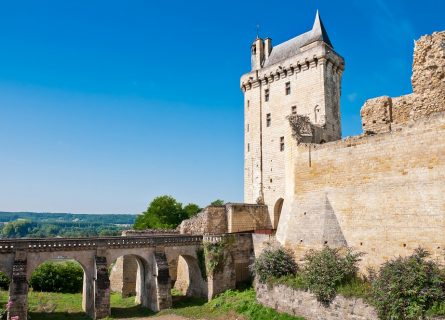
Chinon is the quintessential Loire town, rich in historical intrigue and splendid architecture. The Romans seized the region after invading Gaul in 52 BC, transforming it into an important castrum (fort) in the fifth century. It was also a vital center of trade and viticulture in the Loire Valley, with the Vienne and Loire River banks covered in vines.
However, it is unlikely that anyone cultivated Cabernet Franc in the ancient era; the first recorded mention of Chinon wine occurred in the 11th century by the religious figure Saint Mexme.
Chinon During the Middle Ages
By the Middle Ages, Henry of Anjou had bestowed great favor on the town of Chinon, rebuilding and extending the castle, which can be explored today. The Royal Court often relocated to Chinon, as it was one of Henry’s preferred summer residences. Meanwhile, the area’s sweet white wines (with red styles not gaining popularity until the 18th century) became the height of fashion in England, easily transported to the sea from Chinon.
Evolution of Chinon’s Wine Culture
Wine historians believe that Cabernet Franc ( indigenous to lower Aquitaine) was brought to the town via the Loire River, entering the west coast at Nantes. Of course, we would scarcely recognize the Chinon red wines of the 18th and 19th centuries: light, acidic, and very pale concoctions that required a healthy dose of chaptalization to reach alcohol levels of 10%.
Nevertheless, these anemic reds were highly popular in the taverns of Orleans, Paris, and London, generating much wealth for the vignerons of Chinon.
Impact of Phylloxera and Appellation Status
Unfortunately, the phylloxera epidemic of the late 1800s did not spare Chinon and its vines. During the massive replanting program of the early 20th century, the increase in red varieties came at the expense of white grapes. Bestowed appellation status in 1937, Chinon has become one of Loire’s most renowned destinations for visiting oenophiles.
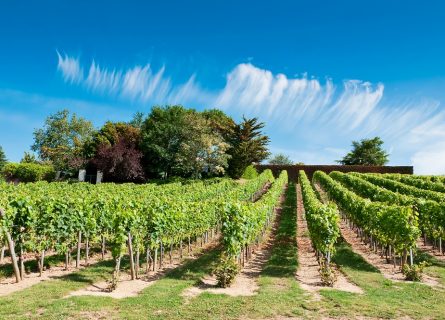
Chinon, recognized as one of the Loire’s main wine-producing areas, has its vineyards southwest of Tours, encompassing 26 communes in the very pretty Indre-et-Loire département. The main cluster of vines are located to the east of Chinon town and to its northwest, heading toward Bourgueil on the north bank of the Loire.
Vineyard Distribution and Varietal Focus
Meanwhile, the Vienne River’s north and south banks are planted to red and white varieties, although Chenin Blanc is a very small part of the region’s total acreage. Today, there are approximately 2400 hectares planted in Chinon, with whites accounting for less than five percent of the entire production.
Indeed, at this Atlantic-influenced end of the Touraine province, Cabernet Franc – known locally as Breton – is the star of the show. Yet it traditionally bore little resemblance to the Cabernet Franc wines of Saint-Emilion and Pomerol, largely due to the cooler oceanic climate (year-round rainfall and mild summers) and a ‘softly-softly’ approach to winemaking.
However, many growers are now harvesting riper fruit in Chinon, partially because of climate change and partly due to lower yields and better vineyard management. As a result, the gap between Loire Cabernet Franc and Bordeaux Cabernet Franc (not to mention New World expressions!) is narrowing.
Terroir and Micro-climates of Chinon
Of course, terroir and microclimates also play important roles here. Chinon is fortunate to boast a patchwork of diverse soils, aspects, and elevations—single-vineyard expressions have recently become popular. The climats (vineyard sites) planted along the riverside tend to yield the most fragrant and supple red wines in Chinon; sand and gravel terroir are ubiquitous here, with clay subsoils. Such conditions are naturally conducive to making a lighter, earlier-drinking style of Cabernet Franc and Chenin Blanc.
Diverse Soils and Their Impact on Wine Quality
However, the most structured and powerful wines require tuffeau, a local type of white limestone that crumbles in your hand. This superior terroir is abundant in the south-facing slopes of Cravant-les-Coteaux, situated east of Chinon on the north bank of the Vienne. Today, Chinon has approximately 2400 hectares planted, with whites accounting for less than five percent of the entire production.
Yet, at the same time, porous clay limestone retains a certain volume of liquid that vine roots can access during dry and sunny weather. This wonderful terrain, highly regarded by growers worldwide, is also a feature of the plateau above Beaumont-en-Veron to the northwest of Chinon. Rich in limestone, these steep slopes are responsible for the appellation’s greatest Cabernet Franc: elegant, tannic, and potent red wines.
It was fairly easy to characterize and define Chinon Rouge in the 20th century. The most appropriate adjective that springs to mind is silky – a light and sappy red wine with low-to-moderate levels of tannin and extract. Its floral profile, reminiscent of Beaujolais’ Gamay grape, featured red cherry and raspberry fruit; much like that wonderful variety, one could serve young Chinon slightly chilled to emphasize the grape’s innate freshness. It wore its elegance – and vitality- on its sleeve.
Transformation in the 21st Century
Yet the past 20 years have witnessed a string of very warm vintages in Chinon, including 2005, 2009, 2015, 2018, and 2022. Wines produced in these years had the substance and structure of a fine Saint-Emilion, able to improve in bottle for over a decade. Such base wines inevitably receive handling very differently from the light, acidic, and sometimes anemic vintages of the past, with 1998 being a classic example.
Appellation Rules and Winemaking Techniques
But come rain, hail, or shine, the appellation rules state that Chinon rouge must contain a high percentage (90 percent) of Cabernet Franc, supported by a small amount of Cabernet Sauvignon. In cooler years, strict selection will be necessary to discard the berries that have not achieved good levels of phenolic ripeness, either during the harvest or via a sorting machine in the winery. Superior lots will then be crushed and destemmed, with a relatively warm fermentation in stainless steel (or concrete/wooden vats) and a brief post-fermentation maceration.
Maturation and Style Evolution
Traditionally, red Chinon was matured in old oak barrels and vats for up to three years, with regular racking over that period. The results in bottle could be mesmerizing: a very silky and delicate red, renowned for its perfume of crushed red fruits and graphite. Usually, its alcohol would not exceed 12 percent abv; chaptalization was far from uncommon in the 1990s.
Shifts in Vinification Approach
In 2018, however, growers were often harvesting berries with a potential abv of at least 13.5%. This necessitates a very different approach – chaptalization is a no-no, and a lengthy maceration is permissible, so long as the winemaker avoids producing an over-extracted fruit bomb.
Such powerful wines can handle a spell in new barrique, creating a wine that merges the finesse of Margaux with the voluptuous energy of a great Pomerol. If you like your Cabernet Franc wines ripe and expressive, seek out this legendary vintage.
Chinon Whites and Rosés
Chinon whites and rosés are made in a very different mold. Today, ultra-protective winemaking has become normalized in the region, using cold fermentation in stainless steel to fashion a very fruit-driven and aromatic style of wine. Occasionally, Chenin Blanc may be aged in wood for up to 12 months, which can really flatter this high-class and malleable grape. However, even the best examples rarely come close to the sheer brilliance of Savennières and Vouvray.
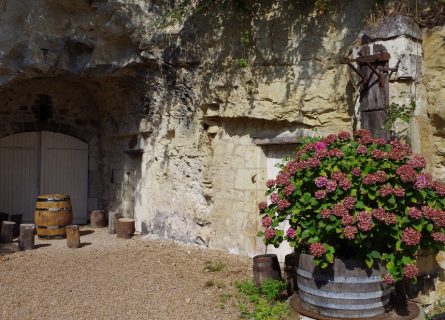
There are two remarkable things about Chinon. The first is that such a beautiful expression of Cabernet Franc -regal, exquisitely perfumed, and gloriously energetic – could be so criminally undervalued. In the 1800s, top Chinon labels were collector’s items, often (and favorably) compared to the Cru Classe wines of Pauillac and Margaux.
Yet while blue-chip Bordeaux has gone from strength to strength in the 21st century, the secondary market remains (largely) aloof to the Loire Valley and its myriad of appellations. The only real beneficiary of this apathy is the consumer – you can bag yourself a superlative Chinon rouge for less than $30 in many cases. Our advice is to take advantage of this once-in-a-lifetime vinous bargain.
Chinon’s Rich Cultural and Historical Tapestry
The second is the region’s incredible history and cultural legacy. One of the regrettable facts of life is that the production of many famous wines occurs in very uninspiring surroundings; for instance, the flat, anodyne landscape of the Medoc is hardly likely to get your pulse racing.
But Chinon is utterly captivating, endowed with a fascinating old medieval quarter and bucolic countryside that hides a big secret. Beneath the tuffeau hills is a network of subterranean caves that once provided shelter and storage for the local Paleolithic inhabitants, developing a unique troglodyte culture.
Troglodyte Caves: A Unique Aspect of Chinon’s Winemaking
Originally used as human dwellings, these eerie caverns now provide the ideal conditions to store wine. Some producers in Chinon will organize atmospheric, tavern-lit tours of their cellars – an experience few other destinations can offer. There isn’t an ounce of pretension or Napa Valley gloss in the vineyards of Chinon, just authenticity by the bucketload.
Chenin blanc is a white wine grape varietal from France's Loire Valley Wine Region. It's a highly versatile grape that produces delicious, light-bodied wines.
Find out moreCabernet Franc grape is a close relative of Merlot and Cabernet Sauvignon and is the principal blending grape used in Bordeaux.
Find out moreDiscover the irresistible allure of Cabernet Sauvignon—a worldwide favorite with robust, dark-bodied flavor. Unleash your wine journey today!
Find out more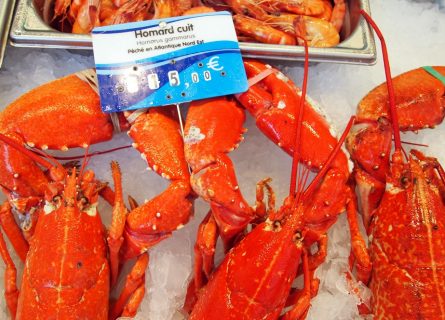
Dining out in Chinon can be a memorable affair. As the sun sets, take a stroll into the medieval quarter and let your nose guide you to the town’s finest kitchens; restaurants encompass relaxed bistros and more formal destinations like L’Oceanic. The latter serves all manner of aquatic delights, including turbot, langoustines, pike, oysters, and scallops. It offers a taste of Left Bank brasserie dining sans the Parisian attitude!
A Gastronomic Guide to the Cuisine of the Loire: Read more
If you would like us to customize an exclusive luxury tour, contact us and let us know your travel plans. We offer luxury food and wine tours for private groups of a mininium two guests. In addition, all of our private, chauffeured tours are available year-round upon request.

